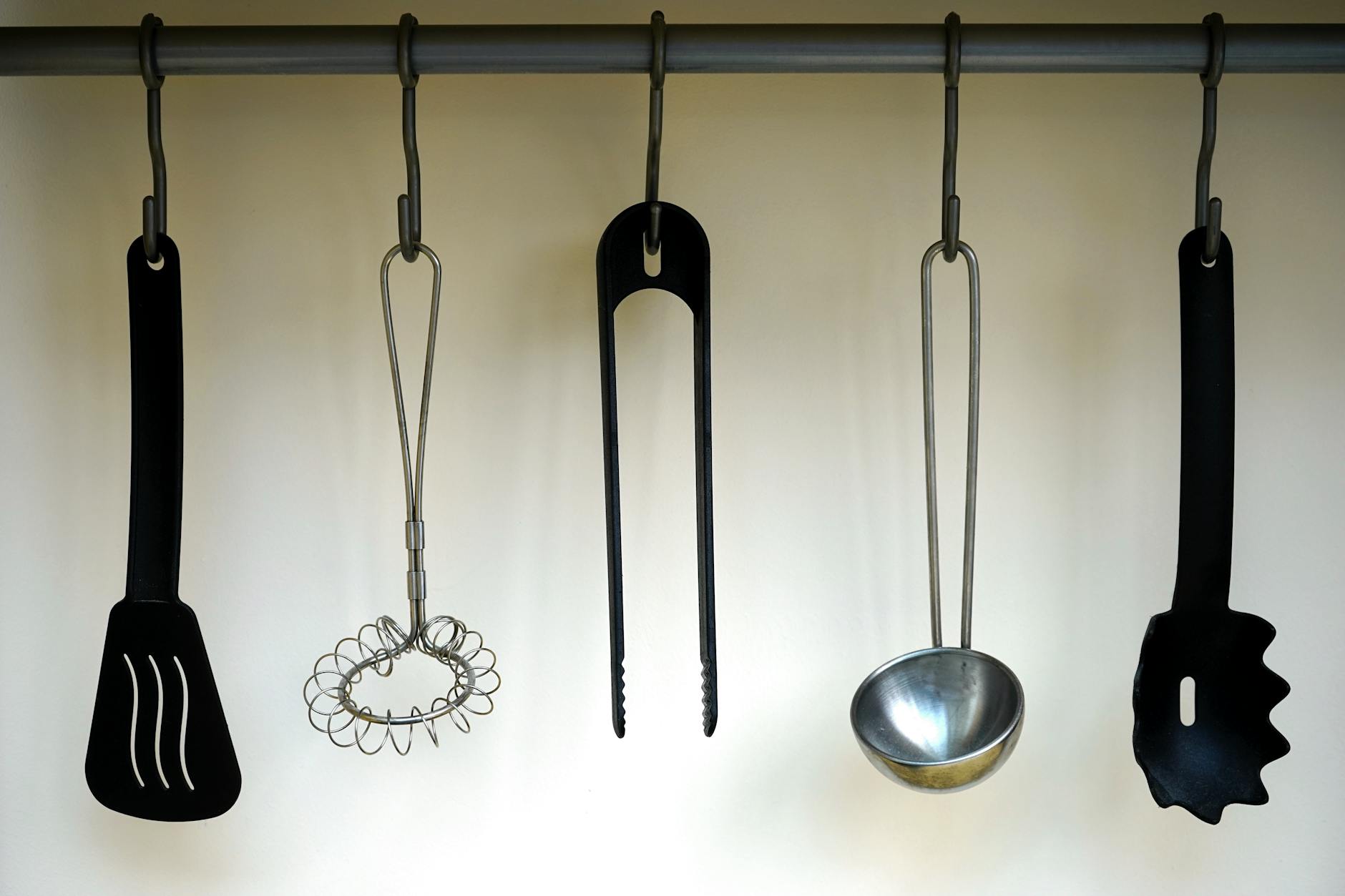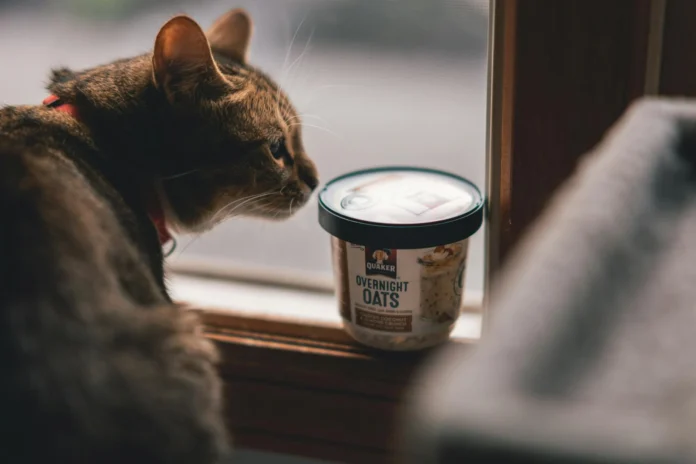
Are you tired of seeing your feline friend turn their nose up at store-bought cat food? 😾 It’s time to take matters into your own paws! Homemade cat food isn’t just a trend – it’s a game-changer for your kitty’s health and happiness. 🐱💖
Imagine the satisfaction of watching your cat devour a meal you’ve lovingly prepared, knowing exactly what ingredients went into it. No more mysterious additives or questionable fillers! By creating your own cat food recipes, you’re not only catering to your pet’s taste buds but also ensuring they receive the essential nutrients they need to thrive. 🌟
In this blog post, we’ll explore the wonderful world of homemade cat food, from its numerous benefits to easy-to-follow recipes that will have your furry friend purring with delight. We’ll cover everything from a simple chicken and rice dish to a fish-based feast, and even discuss how to tailor recipes to your cat’s specific needs. So, grab your apron and let’s embark on a culinary adventure that will transform mealtime for your beloved feline companion! 🍽️🐾
Benefits of Homemade Cat Food

Nutritional control
Homemade cat food offers unparalleled control over your feline friend’s nutrition. By preparing meals yourself, you can tailor the ingredients to meet your cat’s specific dietary needs. This level of customization is particularly beneficial for cats with health issues or food sensitivities.
| Nutrient | Benefits | Common Sources |
|---|---|---|
| Protein | Muscle maintenance, energy | Chicken, fish, eggs |
| Taurine | Heart and eye health | Organ meats, fish |
| Omega-3 | Coat health, inflammation reduction | Fish oil, flaxseed |
| Vitamins | Overall health, immune function | Liver, vegetables |
Avoiding harmful additives
Commercial cat foods often contain preservatives, artificial colors, and fillers that may be detrimental to your cat’s health. By making cat food at home, you can:
- Eliminate artificial preservatives
- Avoid unnecessary food coloring
- Reduce the risk of allergic reactions
- Control sodium levels
Freshness and quality assurance
When you prepare cat food at home, you have complete control over the freshness and quality of ingredients. This ensures:
- Maximum nutrient retention
- Better taste, encouraging picky eaters
- Reduced risk of foodborne illnesses
- Peace of mind knowing exactly what’s in your cat’s food
Cost-effectiveness
While initial costs may be higher, homemade cat food can be more economical in the long run. You can:
- Buy ingredients in bulk
- Take advantage of sales on meats and fish
- Reduce veterinary costs by improving your cat’s overall health
- Customize portion sizes to reduce waste
By preparing your cat’s meals at home, you’re investing in their health and potentially saving on future medical expenses.
Essential Nutrients for Cats
Protein requirements
Protein is the cornerstone of a cat’s diet, essential for muscle maintenance, growth, and overall health. Cats are obligate carnivores, meaning they require animal-based proteins to thrive. The ideal protein sources for cats include:
- Chicken
- Turkey
- Fish (salmon, tuna)
- Beef
- Eggs
These proteins provide essential amino acids that cats cannot produce on their own. A balanced homemade cat food should contain 30-50% protein on a dry matter basis.
| Protein Source | Protein Content (per 100g) |
|---|---|
| Chicken breast | 31g |
| Salmon | 20g |
| Turkey | 29g |
| Beef | 26g |
| Egg | 13g |
Necessary fats and oils
Fats are crucial for energy, coat health, and absorption of fat-soluble vitamins. Cats require:
- Omega-3 fatty acids (EPA and DHA)
- Omega-6 fatty acids
- Arachidonic acid
Good sources include fish oil, flaxseed oil, and animal fats. Aim for 15-20% fat content in your homemade cat food.
Vitamins and minerals
A balanced cat diet should include essential vitamins and minerals:
- Vitamin A: liver, egg yolks
- B vitamins: organ meats, fish
- Vitamin E: vegetable oils, liver
- Calcium: ground eggshells, bone meal
- Phosphorus: meat, fish
- Magnesium: fish, meat
Importance of taurine
Taurine is an amino acid crucial for cat health, affecting heart function, vision, and reproduction. Cats cannot synthesize taurine, so it must be provided in their diet. Rich sources of taurine include:
- Heart muscle
- Dark meat poultry
- Seafood
Ensuring adequate taurine in homemade cat food is vital to prevent deficiency-related health issues. When crafting your recipes, consider supplementing with taurine powder if needed. With these essential nutrients in mind, let’s explore some simple and nutritious homemade cat food recipes that your feline friend will love.
Simple Chicken and Rice Recipe

A. Ingredients list
- 1 pound boneless, skinless chicken breast
- 1/2 cup white rice
- 1/4 cup chicken liver
- 1 tablespoon bone meal powder
- 1 teaspoon taurine supplement
- 1/4 teaspoon salt substitute (potassium chloride)
- 1 tablespoon fish oil
- 1 cup water
B. Cooking instructions
- Dice the chicken breast and liver into small, bite-sized pieces.
- In a large pot, bring water to a boil.
- Add chicken, liver, and rice to the boiling water.
- Reduce heat and simmer for 20 minutes or until chicken is cooked through and rice is tender.
- Remove from heat and let cool for 15 minutes.
- Stir in bone meal powder, taurine supplement, salt substitute, and fish oil.
- Mix thoroughly to ensure even distribution of supplements.
C. Portion sizes and storage
| Cat Weight | Daily Portion |
|---|---|
| 5-7 lbs | 4-5 oz |
| 8-10 lbs | 5-6 oz |
| 11-13 lbs | 6-7 oz |
Store in airtight containers in the refrigerator for up to 3 days or freeze for up to 2 months. Thaw frozen portions in the refrigerator overnight before serving.
D. Nutritional breakdown
- Protein: 30-35%
- Fat: 15-20%
- Carbohydrates: 5-10%
- Moisture: 65-70%
This recipe provides a balanced mix of protein, fats, and essential nutrients. The chicken offers lean protein, while the rice provides easily digestible carbohydrates. The liver adds vital nutrients like vitamin A and iron. Supplements ensure the food meets feline nutritional requirements.
Now that we’ve covered this simple chicken and rice recipe, let’s explore a fish-based alternative for cats who prefer seafood flavors.
Fish-based Cat Food Recipe

Selecting safe fish options
When preparing fish-based cat food, it’s crucial to choose safe and nutritious options. Here’s a list of fish that are generally safe for cats:
- Salmon
- Tuna (in moderation)
- Sardines
- Mackerel
- Cod
- Trout
Avoid raw fish and opt for cooked varieties to eliminate harmful bacteria. Always remove bones to prevent choking hazards.
Balancing omega fatty acids
Omega-3 and omega-6 fatty acids are essential for your cat’s health. Here’s a comparison of fish rich in these nutrients:
| Fish Type | Omega-3 | Omega-6 | Benefits |
|---|---|---|---|
| Salmon | High | Low | Skin, coat, heart health |
| Sardines | High | Low | Anti-inflammatory |
| Mackerel | High | Moderate | Brain function |
Step-by-step preparation guide
- Cook 1 cup of deboned fish (e.g., salmon) thoroughly
- Puree 1/4 cup cooked vegetables (e.g., pumpkin or sweet potato)
- Mix in 1 tablespoon of fish oil
- Add 1/4 teaspoon of taurine supplement
- Combine all ingredients and mix well
Serving suggestions
Serve the fish-based cat food at room temperature. Start with small portions to introduce the new diet gradually. Store leftovers in an airtight container in the refrigerator for up to 3 days. For longer storage, freeze individual portions and thaw as needed.
Now that we’ve covered a delicious fish-based recipe, let’s explore how to tailor these recipes to your cat’s specific needs and preferences.
Tailoring Recipes to Your Cat’s Needs

Addressing food allergies
When it comes to tailoring recipes for cats with food allergies, it’s crucial to identify the allergen and find suitable alternatives. Common allergens for cats include:
- Beef
- Dairy
- Fish
- Chicken
- Eggs
To address food allergies, consider using novel protein sources such as:
- Duck
- Rabbit
- Venison
- Turkey
Always introduce new ingredients gradually and monitor your cat’s reaction closely.
Recipes for senior cats
Senior cats often require special dietary considerations. Here’s a table comparing the nutritional needs of senior cats to adult cats:
| Nutrient | Adult Cats | Senior Cats |
|---|---|---|
| Protein | Moderate | Higher |
| Fat | Moderate | Lower |
| Fiber | Moderate | Higher |
| Calories | Normal | Lower |
When preparing meals for senior cats, focus on easily digestible proteins and incorporate supplements like glucosamine for joint health.
Kitten-specific meal ideas
Kittens need nutrient-dense meals to support their rapid growth. Here are some kitten-friendly ingredients:
- High-quality protein (chicken, turkey, or fish)
- Egg yolks (cooked)
- Bone meal (for calcium)
- Kitten milk replacer (as a supplement)
Weight management variations
For cats needing weight management, consider these modifications:
- Reduce overall calorie content
- Increase fiber to promote satiety
- Use lean protein sources
- Incorporate low-calorie vegetables like green beans or pumpkin
Remember to consult with a veterinarian before making significant changes to your cat’s diet, especially when addressing specific health concerns or life stages.
Tools and Equipment for Homemade Cat Food

Essential kitchen gadgets
When preparing homemade cat food, having the right tools can make the process much easier and more efficient. Here are some essential kitchen gadgets for creating nutritious meals for your feline friend:
- Food processor or blender
- Meat grinder
- Slow cooker or pressure cooker
- Kitchen scale
- Sharp knives
- Cutting boards
| Gadget | Purpose |
|---|---|
| Food processor | Puree ingredients for a smooth texture |
| Meat grinder | Create finely ground meat for easier digestion |
| Slow cooker | Cook large batches of food slowly and evenly |
| Kitchen scale | Measure ingredients accurately for balanced nutrition |
Food storage containers
Proper storage is crucial for maintaining the freshness and safety of homemade cat food. Consider the following options:
- Glass containers with airtight lids
- BPA-free plastic containers
- Silicone freezer bags
- Ice cube trays for portioning
Measuring tools for accuracy
Precise measurements are essential for creating balanced and nutritious cat food recipes. Use these tools:
- Measuring cups (both dry and liquid)
- Measuring spoons
- Digital kitchen scale
Time-saving prep techniques
To streamline the process of making homemade cat food, try these efficient techniques:
- Batch cooking: Prepare large quantities and freeze in portions
- Meal prepping: Chop and measure ingredients in advance
- Use a slow cooker for hands-off cooking
- Invest in a food processor for quick ingredient preparation
By utilizing these tools and techniques, you can create healthy, homemade cat food with ease and efficiency. With practice, you’ll develop a routine that works best for you and your feline companion.
Preparing nutritious homemade meals for your feline friend can be a rewarding experience that benefits both you and your cat. By understanding the essential nutrients cats need and using simple recipes like chicken and rice or fish-based meals, you can create delicious and healthy food tailored to your kitty’s specific requirements. With the right tools and equipment, making cat food at home becomes an easy and enjoyable process.
Remember, every cat is unique, and their dietary needs may vary. Always consult with your veterinarian before making significant changes to your cat’s diet. By taking the time to prepare homemade cat food, you’re not only providing your furry companion with a nutritious meal but also strengthening the bond between you and your beloved pet.



